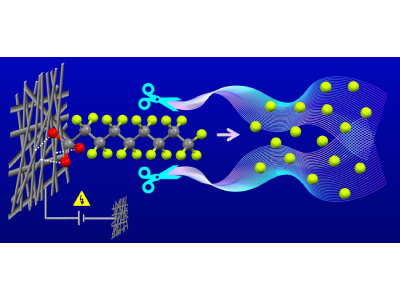
Credit: Ziyi Meng et al.
University of Rochester researchers have developed a novel technique to remove PFAS from consumer products. With increased public focus on PFAS remediation the technique, which the researchers have filed a patent for, could be utilized on an industrial scale to assist with PFAS cleanup.
The novel electrochemical approach, published in the Journal of Catalysis, focuses primarily on PFOS a now banned substance in most of the world. PFOS was widely used for stain-resistant products, and despite its removal from use in the early 2000s persists in the environment thanks to its widespread use. To assist in the remediation and removal of PFOS from the environment researchers developed a novel nanocatalyst that binds and defluorinates PFOS.
“Using pulsed laser in liquid synthesis, we can control the surface chemistry of these catalysts in ways you cannot do in traditional wet chemistry methods,” said Astrid Müller, assistant professor of chemical engineering. “You can control the size of the resulting nanoparticles through the light-matter interaction, basically blasting them apart.”
The method utilizes a hydrophilic carbon paper to provide a cheap substrate with increased surface area for nanoparticles to adhere to. Additionally, the method employs lithium hydroxide at high concentrations to defluorinate the PFOS. Unlike current methodologies that utilize boron-doped diamond, the technique developed uses nonprecious metals. This modification results in a method that costs 100 times less than boron-doped diamonds.
The researchers intend to continue developing the technology by understanding why lithium hydroxide is so effective and whether more abundant and cheaper materials could be used. Additionally, they plan to expand the method to be applicable to several PFAS chemicals.
The team reports they have more work ahead of them before commercializing the method, however, with additional optimization, the method could be used to clean up contamination sites as well as have applications in wastewater treatment facilities.